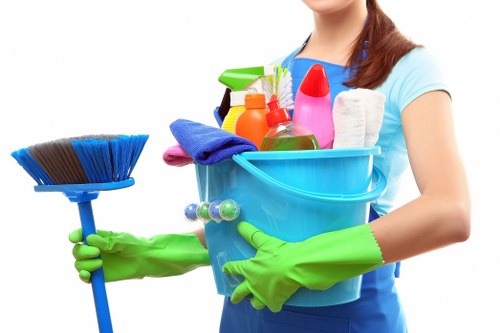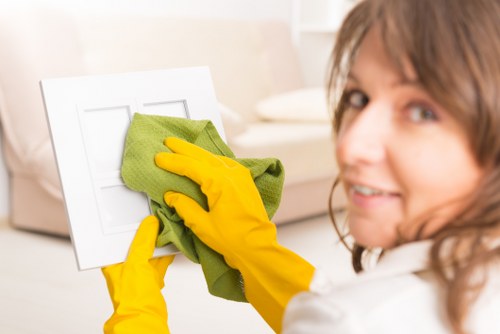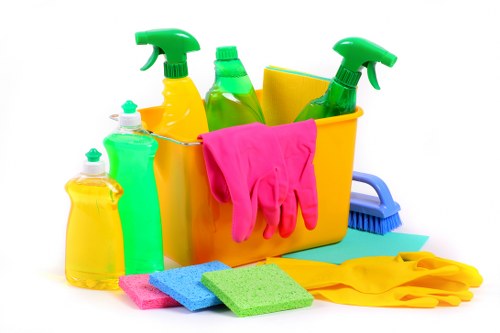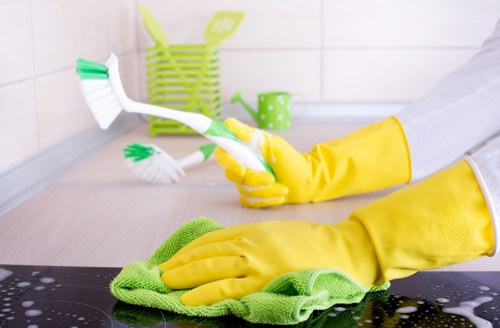Hard Floor Cleaning in House Cleaning
Introduction to Hard Floor Cleaning

Hard floors, such as hardwood, tile, laminate, and vinyl, are a popular choice in many homes due to their durability and aesthetic appeal. Maintaining these surfaces requires regular cleaning to preserve their appearance and extend their lifespan. Proper hard floor cleaning not only enhances the beauty of your home but also contributes to a healthier living environment.
In this comprehensive guide, we will explore effective techniques and best practices for cleaning various types of hard floors. Whether you’re a seasoned homeowner or new to household maintenance, these tips will help you achieve spotless and well-maintained floors.
Understanding the specific needs of different hard floor materials is crucial. Each type requires unique cleaning methods and products to avoid damage and ensure longevity.
Types of Hard Floors

Before diving into cleaning methods, it’s essential to identify the type of hard floor in your home. Common types include:
- Hardwood: Natural wood floors known for their warmth and timeless beauty.
- Tile: Durable and water-resistant, perfect for kitchens and bathrooms.
- Laminate: Cost-effective and easy to maintain, mimicking the appearance of wood or stone.
- Vinyl: Versatile and resilient, suitable for high-traffic areas.
Each flooring type has its unique characteristics and cleaning requirements. Understanding these differences is the first step toward effective maintenance.
Essential Tools and Supplies

Having the right tools and cleaning supplies is essential for efficient hard floor cleaning. Here is a list of necessities:
- Broom or Dust Mop: For initial dusting and debris removal.
- Mop: Choose between a traditional sponge mop, microfiber mop, or steam mop based on your floor type.
- Cleaning Solutions: Use appropriate cleaners recommended for your specific flooring material.
- Bucket: For mixing cleaning solutions if needed.
- Protective Gloves: To protect your hands from harsh chemicals.
- Vacuum Cleaner: Preferably with a hard floor setting to avoid scratching surfaces.
Investing in quality cleaning tools can make the process more efficient and help maintain the integrity of your floors.
Cleaning Hardwood Floors

Hardwood floors require gentle yet effective cleaning methods to prevent scratches and damage. Follow these steps for optimal results:
1. Dust and Sweep
Use a soft broom or microfiber dust mop to remove dust, dirt, and debris. Avoid using vacuums with beater bars as they can scratch the wood surface.
2. Choose the Right Cleaner
Select a pH-neutral cleaner specifically designed for hardwood floors. Avoid harsh chemicals like ammonia or bleach, which can damage the finish.
3. Mopping Technique
Lightly dampen a microfiber mop with the cleaning solution. Wring out excess liquid to prevent water damage. Mop in the direction of the wood grain for best results.
4. Drying
Immediately dry the floor with a clean, soft cloth to prevent water from seeping into the wood and causing warping.
Pro Tip:
Use area rugs or mats in high-traffic areas to minimize wear and tear on your hardwood floors.
Maintaining Tile Floors

Tile floors are known for their durability and easy maintenance. Here’s how to keep your tile floors looking pristine:
1. Regular Sweeping
Remove loose dirt and debris with a broom or dust mop to prevent scratches and grout buildup.
2. Mopping
Use a mixture of warm water and a mild tile cleaner. Mop the floor, ensuring you rinse with clean water to avoid residue buildup.
3. Grout Maintenance
Clean grout lines regularly with a grout cleaner or a mixture of baking soda and water. For stubborn stains, consider using a steam cleaner.
4. Sealing Tiles
If you have natural stone tiles, apply a sealant to protect against stains and moisture damage. Follow the manufacturer’s instructions for best results.
Maintenance Tips:
- Use door mats to reduce the amount of dirt and moisture that reaches your tiles.
- Avoid using abrasive cleaners that can scratch the tile surface.
Cleaning Laminate Floors
Laminate flooring is a popular choice due to its affordability and resemblance to natural wood. To maintain its appearance:
1. Regular Dusting
Use a microfiber mop or a dry dust mop to remove dust and prevent scratches.
2. Damp Mopping
Use a slightly damp mop with a manufacturer-recommended cleaner. Avoid excessive water, as it can damage the laminate surface.
3. Spot Cleaning
For spills and stains, wipe immediately with a soft cloth and a mild cleaner to prevent moisture from seeping into the seams.
4. Protective Measures
Use furniture pads to prevent scratches and avoid dragging heavy objects across the floor.
Avoid These Mistakes:
- Never use abrasive tools or harsh chemicals on laminate floors.
- Avoid allowing standing water on the floor surface.
Additional Tips:
Maintain consistent humidity levels in your home to prevent the laminate from expanding or contracting.
Vinyl Floor Cleaning Tips
1. Daily Maintenance
Sweep or vacuum regularly using a soft brush attachment to remove dirt and prevent scratches.
2. Mopping
Use a damp mop with a mild detergent. Avoid abrasive cleaners that can dull the vinyl surface.
3. Stain Removal
Tackle stains promptly with a mixture of vinegar and water or a commercial vinyl cleaner. Gently scrub with a soft cloth.
4. Preventing Damage
Place protective pads under furniture legs and avoid high heels or cleats that can cause dents or tears.
Pro Tip:
Regularly rinse the mop to prevent dirt from spreading across the floor.
- Use rugs in entryways to minimize the amount of dirt tracked onto vinyl floors.
- Avoid excessive moisture, which can lead to peeling or warping.
Deep Cleaning Techniques
Occasionally, deep cleaning is necessary to remove embedded dirt and restore the floor’s original luster. Here are some methods:
1. Steam Cleaning
Steam cleaners use high-temperature steam to sanitize and lift dirt from hard floors. Ensure your floor type is compatible with steam cleaning before use.
2. Scrubbing
For stubborn stains and grime, use a soft-bristle brush with a suitable cleaning solution. Scrub gently to avoid damaging the floor surface.
3. Polishing
Polishing hard floors can enhance their shine and provide a protective layer. Use a floor polish compatible with your specific flooring material.
Safety Precautions:
Always ventilate the area when using strong cleaning agents and follow the manufacturer’s instructions for any cleaning equipment.
Preventative Measures for Long-Lasting Floors
Implementing preventative measures can significantly extend the life of your hard floors. Consider the following tips:
- Use Rugs and Mats: Place them in high-traffic areas to reduce wear and tear.
- Maintain Humidity Levels: Consistent humidity prevents wood floors from warping and laminate from expanding.
- Immediate Spill Cleanup: Promptly address spills to prevent water damage and staining.
- Avoid Harsh Cleaners: Use products recommended for your specific floor type to prevent damage.
- Regular Maintenance: Schedule periodic deep cleaning and inspections to address potential issues early.
Additional Tips:
Rotate furniture periodically to avoid uneven wear patterns. Additionally, consider refinishing hardwood floors every few years to rejuvenate their appearance.
Choosing the Right Cleaning Products
Selecting appropriate cleaning products is crucial for effective and safe hard floor cleaning. Here are some guidelines:
1. Read Labels Carefully
Ensure the cleaner is suitable for your specific type of flooring. Look for pH-neutral and non-abrasive formulations.
2. Avoid DIY Solutions
While homemade cleaners can be effective, ensure they do not contain ingredients that can damage your floors, such as ammonia or harsh acids.
3. Test in a Hidden Area
Before applying any new cleaner, test it in an inconspicuous spot to check for adverse reactions or discoloration.
4. Consider Eco-Friendly Options
Eco-friendly cleaners are not only better for the environment but also safer for your family and pets.
Top Cleaners for Different Floors:
- Hardwood: Bona Hardwood Floor Cleaner
- Tile: Zep Neutral pH Floor Cleaner
- Laminate: Method Squirt + Mop
- Vinyl: Rejuvenate All Floors Cleaner
Professional vs. DIY Cleaning
Deciding between hiring professionals or tackling hard floor cleaning yourself depends on various factors such as the condition of your floors, budget, and time constraints.
Benefits of Professional Cleaning
- Expertise: Professionals have the knowledge and experience to handle different types of floors effectively.
- Advanced Equipment: Access to specialized tools and cleaning agents that deliver superior results.
- Time-Saving: Saves you time and effort, especially for deep cleaning or large areas.
Advantages of DIY Cleaning
- Cost-Effective: Eliminates labor costs associated with professional services.
- Control: Allows you to choose your cleaning products and methods.
- Flexibility: You can clean at your own schedule without needing to arrange appointments.
Making the Choice:
For routine maintenance, DIY cleaning is usually sufficient. However, for extensive deep cleaning or restoration, professional services may be more appropriate.
Call to Action:
Contact us today to schedule a professional hard floor cleaning service and keep your floors looking their best.
Common Mistakes to Avoid
Avoiding common cleaning mistakes can prevent damage and maintain the integrity of your hard floors. Here are some pitfalls to watch out for:
1. Using Excess Water
Overly wet mops can seep into seams and cause warping or staining, especially on hardwood and laminate floors.
2. Ignoring Manufacturer’s Guidelines
Always follow the flooring manufacturer’s cleaning and maintenance recommendations to avoid voiding warranties or causing damage.
3. Using Abrasive Tools
Tools like steel wool or stiff brushes can scratch and dull the floor surface over time.
4. Not Addressing Spills Promptly
Allowing spills to sit can lead to water stains, mold growth, and permanent damage to the floor material.
Avoid These Mistakes:
- Never use vinegar or harsh acids on hardwood floors as they can degrade the finish.
- Avoid sweeping when dirt is wet, as it can create mud that scratches the floor.
Seasonal Cleaning Tips
Season changes can affect your hard floors in different ways. Here are tips to maintain your floors throughout the year:
Spring:
- Deep clean to remove accumulated dirt from winter months.
- Inspect for any water damage or warping caused by increased moisture.
Summer:
- Use fans or dehumidifiers to control humidity levels and prevent wood from expanding.
- Rinse mops frequently due to increased dust from open windows.
Fall:
- Prepare floors for increased indoor activity and potential spills.
- Schedule maintenance checks to address any summer wear and tear.
Winter:
- Use doormats to reduce the amount of snow and salt tracked inside.
- Maintain consistent indoor humidity to prevent flooring from contracting.
Additional Seasonal Tips:
Adjust your cleaning schedule based on seasonal needs to ensure your hard floors remain in excellent condition year-round.
Eco-Friendly Cleaning Solutions
For those looking to minimize their environmental impact, eco-friendly cleaning solutions are a great option. These products are safe for both your family and the planet.
Benefits of Eco-Friendly Cleaners:
- Non-Toxic: Safe for children and pets.
- Biodegradable: Environmentally friendly and reduces pollution.
- Effective: Many eco-friendly products are just as effective as traditional cleaners.
Top Eco-Friendly Cleaners:
- Method Squirt + Mop: Plant-based and non-toxic, ideal for various hard floors.
- Better Life Natural Cleaning: Uses natural ingredients to safely clean without harmful chemicals.
- Ecos All-Purpose Cleaner: Versatile and EPA-registered for safe and effective cleaning.
DIY Eco-Friendly Cleaners:
You can also make your own cleaning solutions at home using simple ingredients:
- Vinegar and Water: Mix equal parts for a natural disinfectant (use cautiously on hardwood floors).
- Baking Soda and Lemon Juice: Effective for removing tough stains and odors.
- Castile Soap and Water: Gentle yet effective for everyday cleaning tasks.
Call to Action:
Book your service now and choose eco-friendly hard floor cleaning options for a healthier home and environment.
Conclusion
Maintaining hard floors is a manageable task with the right knowledge and tools. By understanding the specific needs of your flooring type and following the best cleaning practices, you can ensure your floors remain beautiful and durable for years to come.
Regular maintenance, the use of appropriate cleaning products, and the implementation of preventative measures are key to preserving the integrity and appearance of your hard floors. Whether you opt for DIY cleaning or professional services, the investment in proper hard floor care is invaluable.
Take the Next Step
Don’t wait until your floors show signs of wear and tear. Contact us today to schedule a cleaning service and keep your hard floors in pristine condition.